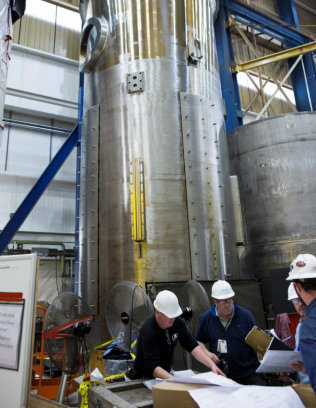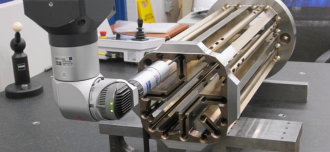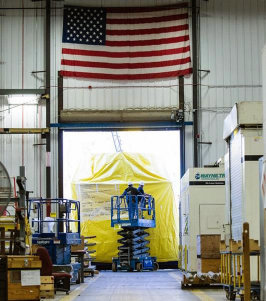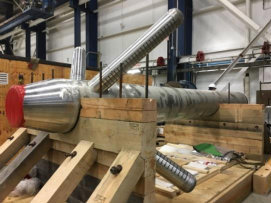Westinghouse has been manufacturing nuclear components at our Newington, New Hampshire Nuclear Components Manufacturing (NCM) facility for over 40 years. A key differentiator that enables the repeated successful performance of challenging manufacturing projects at NCM is the emphasis on upfront manufacturability and prototyping collaboration. There, the team of highly experienced personnel, with a diverse mix of expertise and strong industry history, routinely performs drawing and specification reviews aimed at simplification, cost, and delivery improvement.

Manufacturability review conducted at a Reactor Vessel Internals (RVI) Core Barrel
The NCM team works closely with customer purchasing organizations to assess the complete procurement package, provide manufacturability feedback, and develop and validate solutions. This process is most beneficial when performed prior to design finalization of complex, First of a Kind (FOAK), or newly re-engineered components.
Among other common risk factors that the NCM team often identifies, the design will be analyzed for:

High precision RVI Guide Tube components

Equipment shipping from NCM facility

AP1000 Sparger awaiting preparations for shipment, following an extensive DFM overhaul initiative
Feedback from the DFM review provides clear insight on the direct impacts that design and processing specifications will have on the project elements affecting cost, schedule, and quality of manufacturing. This has provided a critical advantage in helping to minimize cost and schedule, while repeatable, high quality product at optimum value.
Results can be tailored to customer needs, but are typically communicated in the form of a risk matrix with accompanying drawing markups.
The risk matrix will:
The DFM feedback provided can be directly implemented, or the team is available for further dialogue and solution development, including testing and prototyping.
The NCM team has been working with equipment designers for years to develop and refine manufacturing processes and provide best practices for incorporation into design packages.
Recent success stories include: